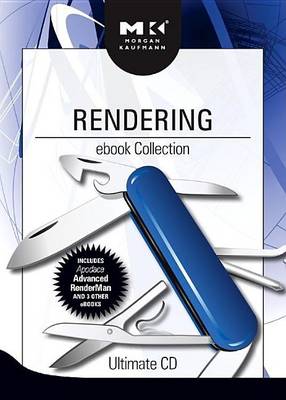Morgan Kaufmann Series in Computer Graphics and Geometric Mo
2 total works
Non-Photorealistic Computer Graphics
by David P Luebke, Martin Reddy, Jonathan D. Cohen, Amitabh Varshney, Benjamin Watson, Robert Huebner, Matt Pharr, Greg Humphreys, Thomas Strothotte, and Stefan Schlechtweg
Published 24 April 2002
Even as developments in photorealistic computer graphics continue to affect our work and leisure activities, practitioners and researchers are devoting more and more attention to non-photorealistic (NPR) techniques for generating images that appear to have been created by hand. These efforts benefit every field in which illustrations-thanks to their ability to clarify, emphasize, and convey very precise meanings-offer advantages over photographs. These fields include medicine, architecture, entertainment, education, geography, publishing, and visualization.
Non-Photorealistic Computer Graphics is the first and only resource to examine non-photorealistic efforts in depth, providing detailed accounts of the major algorithms, as well as the background information and implementation advice readers need to make headway with these increasingly important techniques.
Already, an estimated 10% of computer graphics users require some form of non-photorealism. Strothotte and Schlechtweg's important new book is designed and destined to be the standard NPR reference for this large, diverse, and growing group of professionals.
Non-Photorealistic Computer Graphics is the first and only resource to examine non-photorealistic efforts in depth, providing detailed accounts of the major algorithms, as well as the background information and implementation advice readers need to make headway with these increasingly important techniques.
Already, an estimated 10% of computer graphics users require some form of non-photorealism. Strothotte and Schlechtweg's important new book is designed and destined to be the standard NPR reference for this large, diverse, and growing group of professionals.
Level of Detail for 3D Graphics
by Thomas Strothotte, Stefan Schlechtweg, David Luebke, Martin Reddy, Jonathan D. Cohen, Amitabh Varshney, Benjamin Watson, and Robert Huebner
Published 31 July 2002
Level of detail (LOD) techniques are increasingly used by professional real-time developers to strike the balance between breathtaking virtual worlds and smooth, flowing animation. Level of Detail for 3D Graphics brings together, for the first time, the mechanisms, principles, practices, and theory needed by every graphics developer seeking to apply LOD methods.
Continuing advances in level of detail management have brought this powerful technology to the forefront of 3D graphics optimization research. This book, written by the very researchers and developers who have built LOD technology, is both a state-of-the-art chronicle of LOD advances and a practical sourcebook, which will enable graphics developers from all disciplines to apply these formidable techniques to their own work.
Continuing advances in level of detail management have brought this powerful technology to the forefront of 3D graphics optimization research. This book, written by the very researchers and developers who have built LOD technology, is both a state-of-the-art chronicle of LOD advances and a practical sourcebook, which will enable graphics developers from all disciplines to apply these formidable techniques to their own work.

